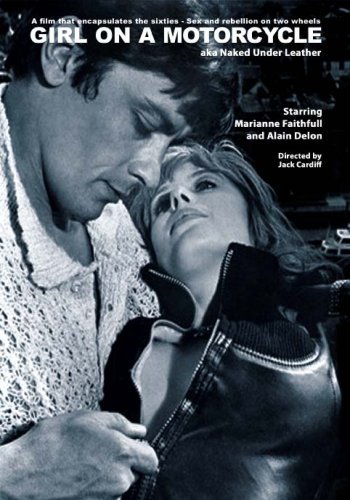



On June 25, 2002 India's Federation of Motor Vehicles estimates 37 million motorcycles/mopeds are registered countrywide, making it home to the largest number of motorized two wheelers in the world.
Realizing this ever-growing body of potential buyers, Royal Enfield decides to market their bikes aiming for the young and hip, playing the Retro card.
As the only genuine touring motorcycle that is manufactured in India, Royal Enfield has more recently stayed away from regular mass media advertising and has concentrated more on building its brand around the values that the brand stands for - riding and eating up the miles. It has positioned itself as a cult brand.
Royal Enfield has been promoting motorcycling as a lifestyle and encourages Enfield riders/owners to keep riding and riding and riding. The company also began organizing annual events and rides to further strengthen the cult status, such as the Himalayan Odyssey, the tour of the Rann of Kutch, the tour of NH 17 (Mumbai to Goa), the Tour of Rajasthan, the tour of the North East and the Southern Odyssey.






Yoshimi Katayama wins the Dutch TT, 50cc class, at TT Circuit Assen in the Netherlands.
Yoshimi Katayama began his Grand Prix career in 1964 with Suzuki riding mainly in the 125cc class. 1964-1966 seasons were mostly filled with fifth and sixth place finishes often due to mechanical problems. The 1967 season things would turn around for Katayama as he would win two Grand Prix races and finish the season in second place behind his Suzuki team-mate, Hans-Georg Anscheidt in the 50cc world championship. Yoshimi finished the 1967 season in fourth place in the 125cc championship.
Katayama would switch to cars in 1968, competing in domestic series mainly as Mazda's factory driver until he retired at the end of 1990.


Honda announces the release of it's all-new 50cc scooter, the Dio Cesta.
Designed as a "fun and convenient way to commute and get around town". The Dio Cesta features a large, fully-integrated front basket to satisfy all your grocery and liquor store needs. The Dio Cesta will be manufactured by Sundiro Honda Motorcycle Co., Ltd. in China and released in scooter-crazed Japan on July 2.
The 4-stroke, air-cooled engine offers low noise and excellent fuel economy. Fully integrated with the scooter body, the large front basket provides greatly increased carrying capacity and has a rolling shutter to deter theft and hold items securely. The headlight is positioned below the basket so as to remain clear of items at all times, while the handle cover position lamp serves as a convenient light source at night.
Dio Ceasta's seat is a stylish two-tone black with brown, and the accents, such as the floor, are a delicate and appealing brown and it's 28" height makes it ideal for female riders and with that in mind, the steering column is designed for lightness and ease of handling. Introduced with three exciting color options for you or the little lady to pick from: Pearl Procyon Black, Pearl Quench Yellow, and Sirius Blue Metallic.



An electric powered Corbin-Yardney motorcycle climbs Mt. Washington, New Hampshire.
During the week of June 15-20, 1975, the first annual alternative vehicle regatta was held at Mt. Washington, New Hampshire. The regatta was created by environmentalist Charles McArthur, who sincerely believed that the rally was necessary to gather together and test all possible forms of alternative transportation to the internal combustion engine. The regatta placed emphasis on low energy consumption and minimum pollution.
Mike Corbin, president of Corbin-Gentry, and Dr. A.W. Petrocelli, Chief Operating Officer of Yardney Electric in Pawcatuck, Connecticut, met in March to make final arrangements for the high energy density silver zinc battery to be used in the Mt. Washington attempt. On June 17, 1975 this super battery, with a total energy content of over 4,680 watt hours, successfully powered the Corbin designed motorcycle 8 miles to the summit on an average grade of 12%, through 99 hairpin turns, in 26 minutes nonstop.
On June 18, this same winning combination made 2 nonstop trips to the summit, thus setting another record.
Corbin-Gentry seats and accessories company name came from Mike Corbin and the beautiful southern singer Bobbie Gentry (Ode to Billy Joe), who had nothing to do with the company but was great to look at.
Mike Corbin was inducted into the AMA Hall of Fame in 2000.





Norman Keith "Sailor Jerry" Collins dies.
He may not have even owned a bike, but there is no denying the mark he left (no pun intended) on hundred's, if not thousand's, of bikers world-wide.
Norman Collins was born on January 14, 1911 in Reno, Nevada, but his family moved shortly afterwards to Northern California. Legend has it that as a child he hopped freight trains across the country and learned the old "needle in hand" tattooing from a man named "Big Mike" from Palmer, Alaska. In 1928 he met Tatts Thomas from Chicago who taught him how to use an electric tattoo machine which he then practiced on drunks brought in from skid row.
In 1930 Norman enlisted in the United States Navy. During his subsequent travels at sea he was exposed to the art and imagery of Southeast Asia. He fell in love with the art, the sea and Hawaii. Collins remained a sailor for his entire life thereafter. Even during his career as a tattoo artist he worked as a licensed skipper of a large three-masted schooner, on which he conducted tours of the Hawaiian islands.
Sailor Jerry's last studio was in Honolulu's Chinatown, then the only place on the island where tattoo studios were located. His work was so widely copied, he took to printing "The Original Sailor Jerry" on his business cards.














,_Suzuki_team.jpg)


















